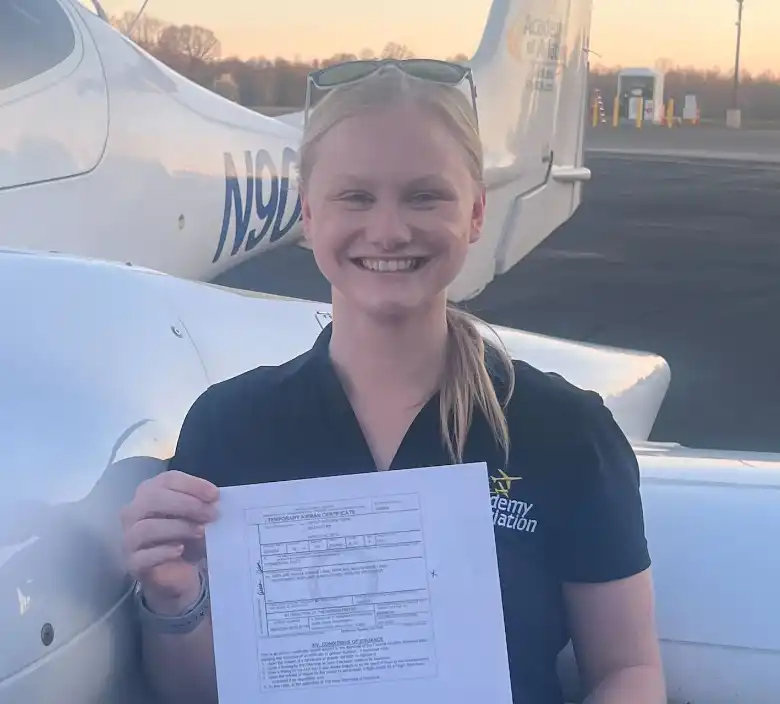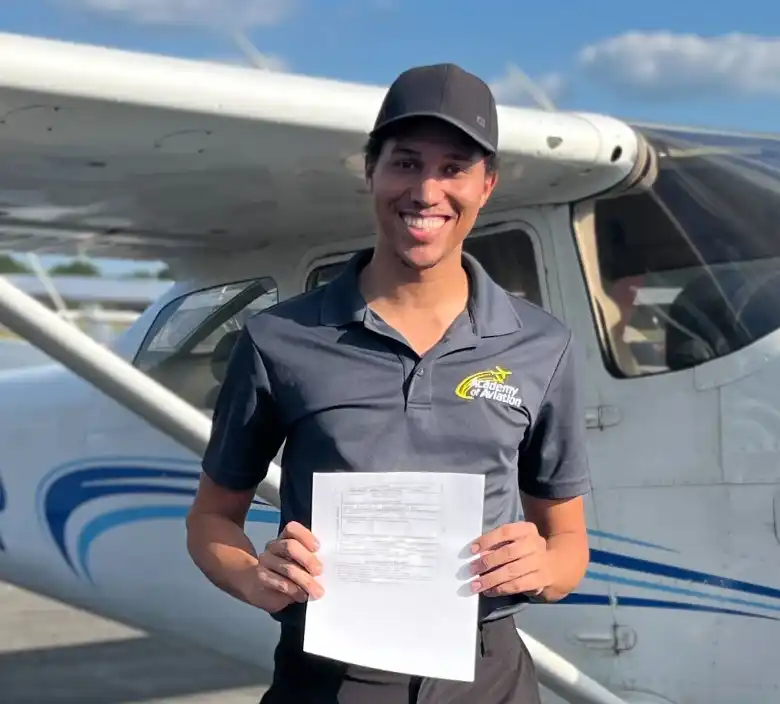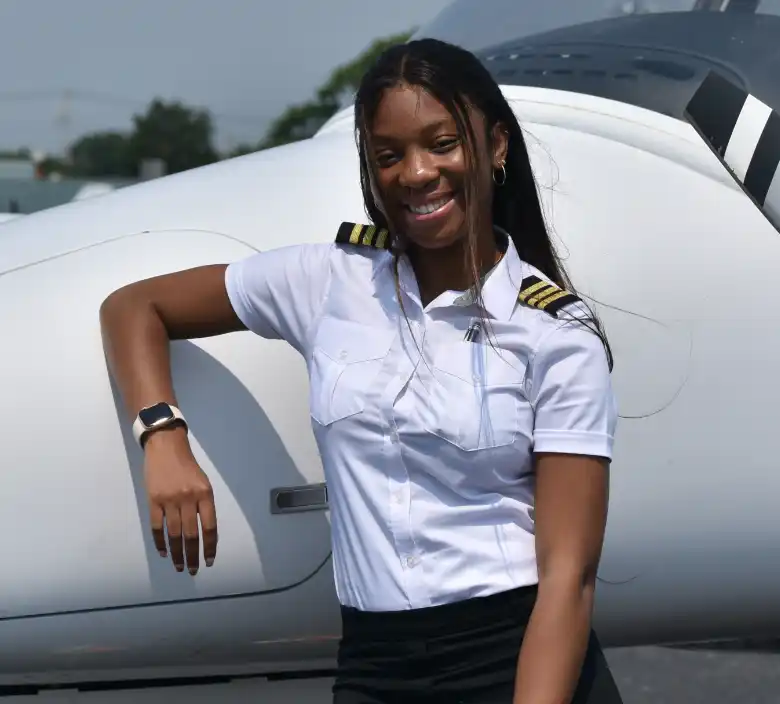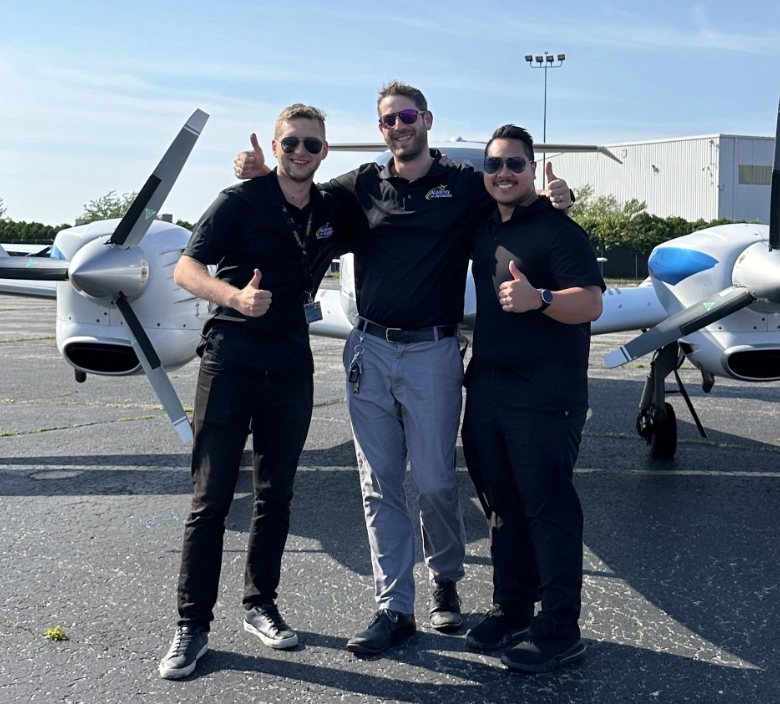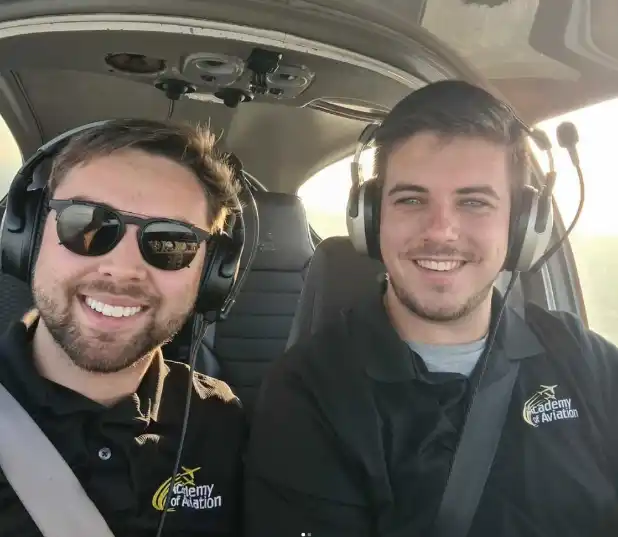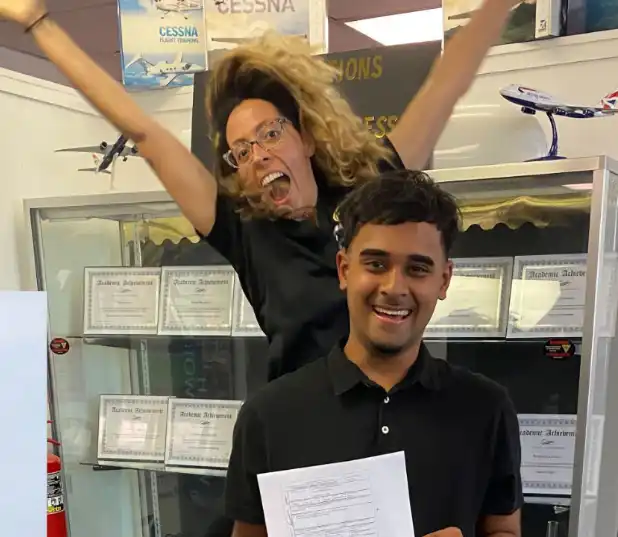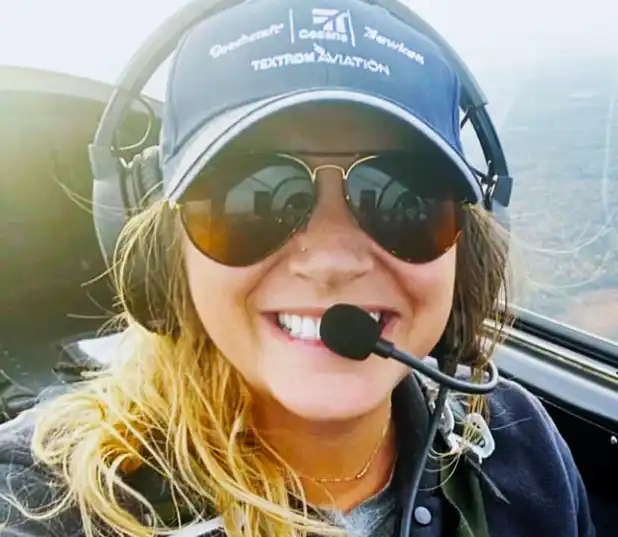Academy of Aviation Private Pilot and Instrument Rating
Prices and Course Duration for your PPL Certificate and Instrument Rating.
There will be many "firsts" on your way to the Private Pilot License - first flight, first radio communication, your first solo flight and landing, first solo cross country ... the sense of achievement and satisfaction is equal to none.
Get Started-
Solo Success in Atlanta
Corey Smith celebrates a successful first solo, and the first solo for AOA's brand new Atlanta location. #flyaoa
-
Instrument Rating in Farmingdale
Surindra Maraj celebrates a successful instrument check ride with his enthusiastic CFI! #flyaoa
-
Flying in the Carolina Sky
AOA CFI Casey in flight over Gastonia. #flyaoa
Your Private Pilot License and Instrument Rating: Price Comparison Chart
The prices below are derived from two sources: Academy of Aviation's price quoting based on our own student completion averages, and Part 141 minimum hours for course completion. Prices are separated by plane type: Cessna 152 and Cessna 172 G1000®. **You may finish your training under Part 141 minimums, but you should expect to realistically finish under AOA's average price.
-
Academy of Aviation Price*
Price reflects the discounted cost of the PPL Rating ONLY that you receive when you combine it with the Instrument Rating. (C-152)
$17,500*-
PPL plus IR combined: $32,230
C-172 G1000® -
Instrument a la carte: $10,280
C-152 -
Instrument a la carte: $12,100
C-172 G1000® - *Prices at our White Plains and Farmingdale locations will be higher.
-
PPL plus IR combined: $32,230
-
**Part 141 Minimum Price
PPL (C-152)
$7,600-
PPL: $9,350
C-172 G1000® -
Instrument: $7,140
C-152 -
Instrument: $8,120
C-172 G1000®
-
PPL: $9,350
Become a pilot with a flight training program built around safety, innovation and accessibility.
Request InfoPrivate Pilot Course from Start to Finish
*Flight Hours for the prices above are based on an average Academy of Aviation student's course completion time for each section:
- Simulator RedBird Dual w/ Instructor • up to 5 hours
- Flight Dual w/ Instructor • up to 55 hours
- Supervised Solo • up to 5 hours
- Pre-Post Instruction Briefing • up to 15 hours
Instrument Rating Course from Start to Finish
- Simulator RedBird Dual w/ Instructor • up to 14 hours
- Flight Dual w/ Instructor • up to 26 hours
- Pre-Post Instruction Briefing • up to 8 hours
We invite you to explore our Student Portal and download our full Course Catalog. There you will discover every detail about all of our programs:
Student Portal
WHAT DO I NEED?
Private Pilot License Eligibility:
- Get started at any age but you must be 16 years old to fly solo
- Be 17 years of age to take your Private Pilot Course check ride
- Obtain a 3rd Class FAA Medical Certificate (or higher)
- English proficiency
- Completion of your High School diploma or equivalent
Part 141 or Part 61: What's the difference
between the two paths of
training?
Part 141 Private Pilot course training syllabi have been evaluated
by the FAA and follow a
strict protocol. Both the student and the flight schools must adhere
exactly to what the FAA has
approved so there are no variations in training. The benefit, you
can obtain your FAA Private
Pilot License in fewer hours, which means shorter training time and
less money.
Part 61 Private Pilot courses, in comparison, are simply more
flexible in how the training is
conducted but have a higher flight hour requirement. It should also
be noted that some airlines
and Civil Aviation Authorities in other countries require Part 141
training, so make sure you
discuss your overall aviation career goals with our Admissions Team
for guidance.
You can read
the FAA Federal
Aviation
Regulations for Part 61 and Federal Aviation Regulations for Part 141 in
depth if you really want to
understand the differences.
What AOA offers to your advantage:
Cessna Pilot
Center with glass cockpit and traditionally equipped
airplanes.
FAA Part 141 approved training at all locations.
Full motion
G1000®
flight simulator.
A mix of airspace - both student friendly and highly
professional.
Rental prices for your time building.
Always available and well serviced airplanes.
Private Pilot License Course Duration
Academy of Aviation prides itself in offering accelerated Private Pilot License training for quick and efficient completion of your Private Pilot Course. How fast you finish is simple math. If you can take your checkride in 35-40 hours, and you fly 5-6 hours per week, you could finish in as little as 6 weeks. Of course, you have to study hard, pass your FAA written exam, and dedicate yourself to learning for optimal results, but your progress is up to you. Not everyone is on a career path to work for an airline, and we are happy to accommodate busy work or school committments with flexible scheduling.
What Can I Do with a Private Pilot License?
A FAA Private Pilot License allows you to fly throughout the United States and even internationally when you comply with the foreign country's regulations. As a Private Pilot, you can carry passengers for fun but you can't offer paid flight services. You can recoup operating expenses such as fuel and tie down fees from your passengers, but you cannot charge them for the flight. Completion of your Private Pilot License grants you the privilege of flying anywhere under 18,000 feet, during the day and night, and the luxury of flying instead of sitting in highway traffic for business or vacation. Your only real restrictions are clouds and weather. Inclement weather that restricts your visibility, such as dense fog or heavy rain, should be avoided until you complete your Instrument Rating. With the additional Instrument and Multi-engine ratings, you will be able to fly in most conditions that airline pilots do.
Private Pilot Training Details
During your Private Pilot Training, you will learn
about airspace,
how an aircraft works, how to
perform basic maneuvers, radio communications with Air Traffic
Control, takeoff procedures --
and more importantly, how to land the aircraft, even in emergency
situations. Like every
successful pilot before you, it all begins with theoretical
learning. Complete your ground
school hours online or in a classroom setting with Academy of
Aviation.
Take advantage of simulator training to practice at a reduced cost.
Make mistakes on the ground,
learn from them, and try it again without the fear of being in the
air. Listen to ATC
communication as often as you can and practice your own responses.
If English is your second
language, Academy of Aviation uses simulator time to not only
practice your flying skills, but
role play with your Instructor as ATC. Once you and your Flight
Instructor are feeling confident
with your performance in the simulator you're ready for the
aircraft.
You will complete the required minimum practical training as
outlined in the Part 141 or Part 61
explanations above in preparation for your check ride. A huge training
milestone will be your first
solo flight, where you will have your first chance to fly by
yourself. Your Flight Instructor
will ensure you have mastered the necessary theoretical and
practical skills necessary to pass
your check ride with a designated FAA examiner, and will provide you
with an endorsement for
your Private Pilot License check ride to be scheduled.
The check ride consists of a verbal/oral exam in which you are asked
questions about your
theoretical knowledge, and a flight exam to assess your skill level.
You will be immediately
notified if you have passed your Private Pilot License check ride or
if you need to re-take a
portion after some more practice. At Academy of Aviation, we
maintain a 92% first-time pass rate
for Private Pilot Course checkrides. You will be issued a printed
temporary Private Pilot
License until your physical card license is processed by the FAA and
shipped to you in the
mail.
Introducing our "First Flight to First Officer" Career Program.
Learn MoreCelebrate Achievement with AOA on Instagram
Hop on over to our social media pages to celebrate life-changing Fight Training achievements with our students and staff, and to join the AOA Family.
